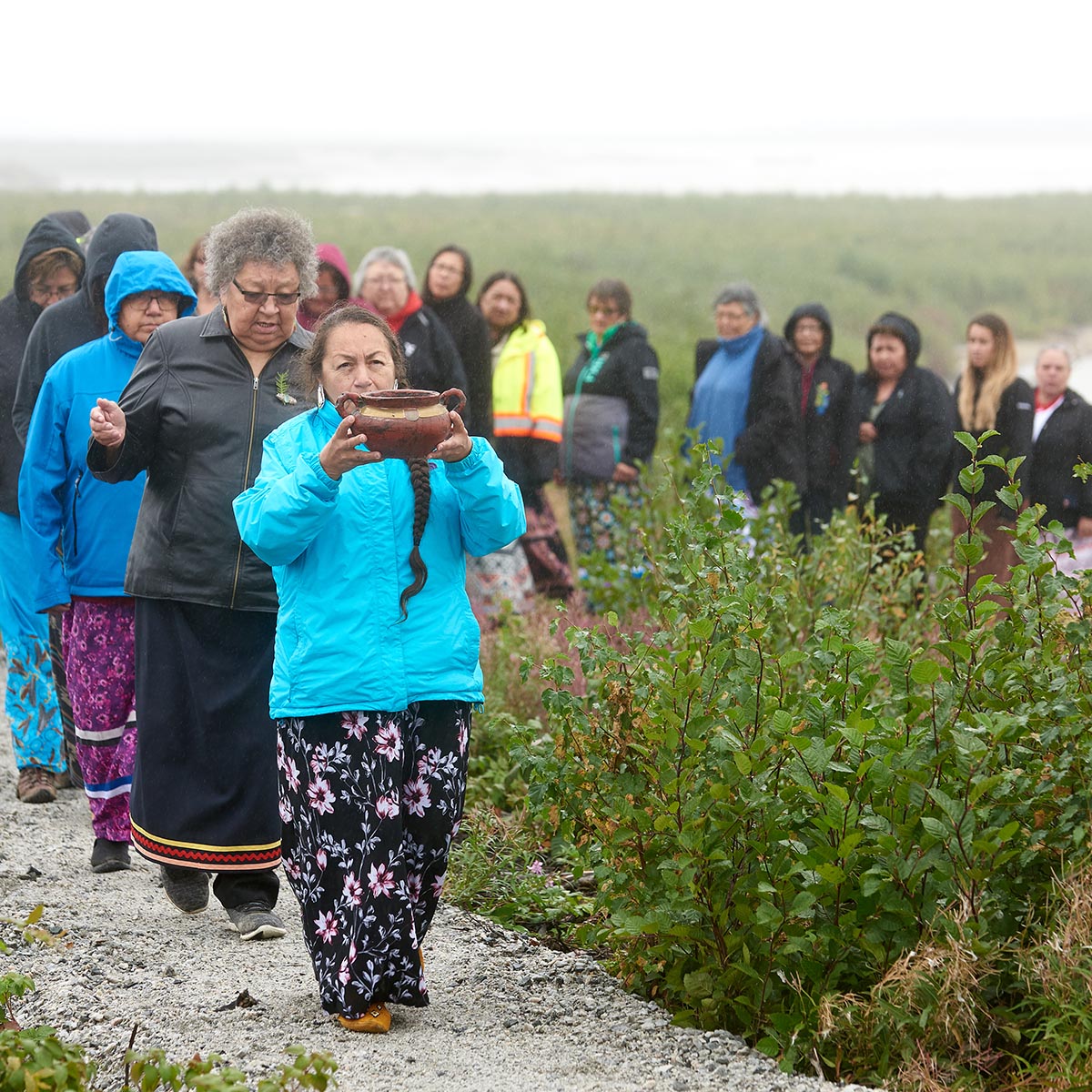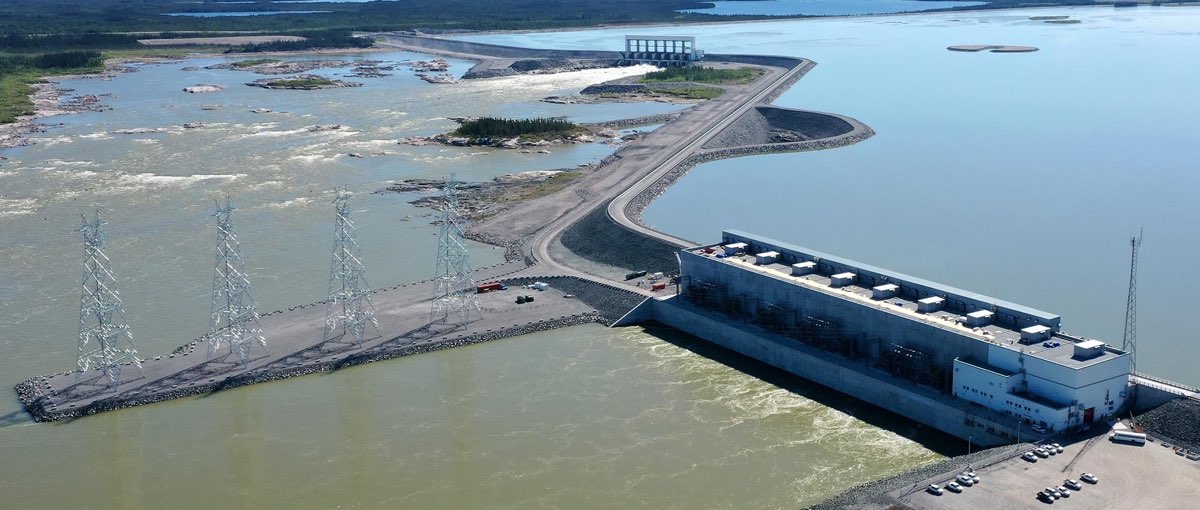Indigenous partnerships build relations; create legacy of mutual benefit

Indigenous women participating in River Diversion Ceremony at Keeyask Generating Station - Summer 2018
Indigenous people and communities play a central role in Manitoba Hydro’s business.
The vast bodies of water and network of riverways flowing throughout Manitoba have provided sustenance and means of transportation to Indigenous communities for centuries. Almost all of the electricity we produce is clean, renewable power generated at our 15 hydroelectric generating stations on these same rivers.
Building and operating these stations affected Indigenous people, their livelihood, culture and communities. Because of that, we are committed to continuing down the path of strengthening and improving our working relationships with these communities to provide mutual benefits.
Beginning in the 1970s, Manitoba Hydro began formal discussions with communities which resulted in the signing of the Northern Flood Agreement in 1977. Since then, we have continued to address the adverse effects of our existing operations on the customs, practices and traditions of Indigenous people. In addition to community-wide comprehensive settlement agreements and project development agreements, we have reached a number of specific agreements with resource user groups like local commercial fishing and trapping associations.
This commitment to respect and support Indigenous peoples in all aspects of our business is one of our four strategic priorities and that commitment flows through everything we undertake.
Our Wuskwatim and Keeyask generating station partnerships took groundbreaking steps to address historical issues and work with Indigenous communities to create employment and business opportunities for communities near those projects. Wuskwatim Generating Station, completed in 2012 on the Burntwood River in northern Manitoba, was built in partnership with the Nisichawayasihk Cree Nation at Nelson House, who currently own approximate 27% of the station. This successful partnership set the stage for another partnership on the Keeyask Generating Station.
Keeyask is a 695-megawatt (MW) hydroelectric generating station under construction approximately 725 kilometres north of Winnipeg on the lower Nelson River. Development of Keeyask is a collaborative effort between Manitoba Hydro and four Manitoba First Nations - Tataskweyak Cree Nation, War Lake First Nation, York Factory First Nation, and Fox Lake Cree Nation - working together as the Keeyask Hydropower Limited Partnership.
Together the parties negotiated the Joint Keeyask Development Agreement (JKDA) in 2009, an agreement that governs how the project is being developed. The JKDA sets out understandings related to potential income opportunities, training, employment, business opportunities and more.
The Wuskwatim and Keeyask partnerships set a new model for hydro development in Manitoba beyond the legacy of clean, renewable energy. Partnerships help create training, employment and business opportunities for people in partner communities, helping better our province and the lives of all Manitobans. These partnerships also help ensure that those communities impacted by our developments also share in the benefits.
At Keeyask, for example, the value of direct negotiated contracts to date with partner First Nation businesses for construction and support services exceeds targets established in the JKDA. The JKDA employment target for partner community members of 630 person-years of employment was also exceeded in January 2016.
With these partnerships, we have made significant progress toward renewed relationships with Indigenous peoples. There is still more work to be done, though - and Manitoba Hydro is committed to building on that foundation in every aspect of our business.
